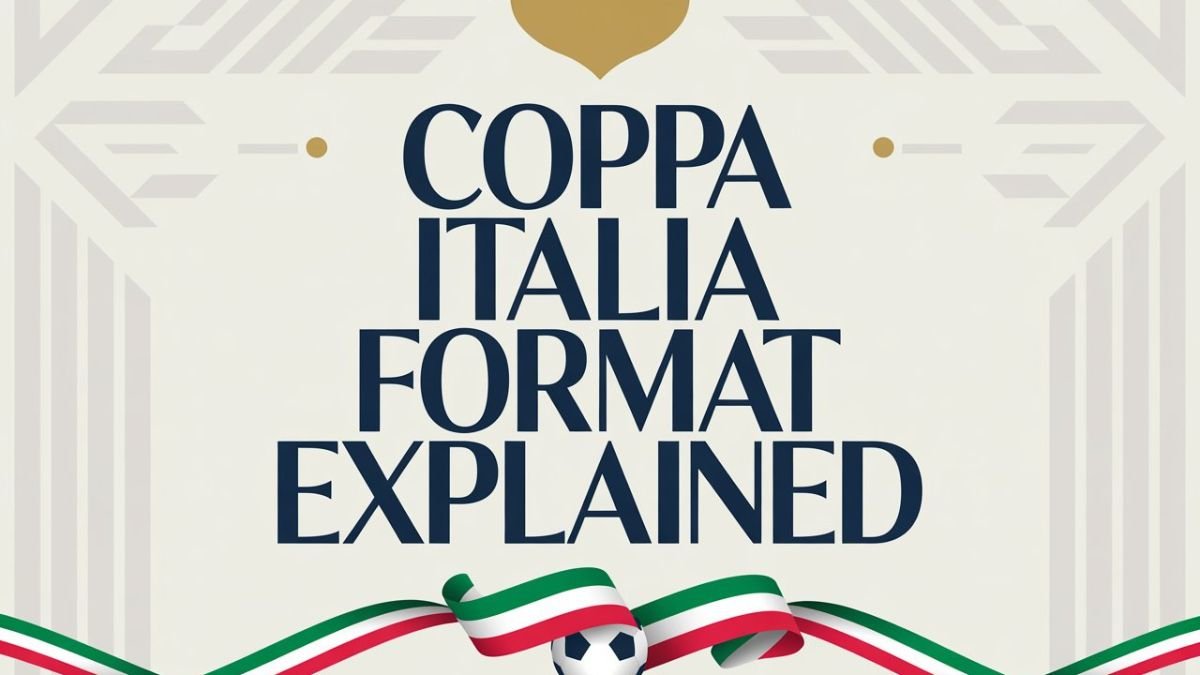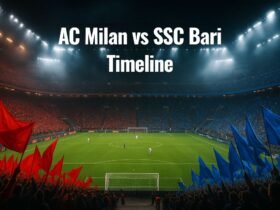The Coppa Italia format has always mixed tradition with unpredictability. Fans enjoy it because every round feels like a fresh story shaped by ambition, squad depth and tactical choices. Lower-tier clubs enter early, while top-flight sides join later in the competition.
This layered entry system creates space for upsets and unforgettable moments that sit alongside other historic Italian football clashes. The tournament rewards discipline, clever management and the ability to stay focused in high-pressure games.
How Early Rounds Work
The beginning of the competition often feels like a battleground for lower-division teams. Clubs from Serie C and the lower end of Serie B chase early momentum, knowing that one strong performance can lift confidence for weeks.
These matches carry intensity because small details matter more in knockout football. A single error can define the entire evening. Many teams rely on compact defending, quick transitions and set plays to create chances, since they rarely dominate possession.
Entry of Lower-Division Teams
When the earliest rounds kick off, many clubs bring high energy and tactical discipline. Coaches focus on organized lines and direct play because they understand how fragile these matches can be.
The opening rounds of Coppa Italia often feel like tests of character rather than technical superiority. Even clubs with limited budgets find ways to create problems for their opponents through effort, courage and smart pressing.
Knockout Pressure and Scheduling
Every fixture in these early stages runs in a single-leg format. That adds urgency to each decision coaches make during the ninety minutes. Many lineups include a blend of youth and experience, giving young players a chance to shine under pressure.
The scheduling also favors teams that prepare well physically, since fixtures sometimes arrive quickly. These characteristics shape the foundation of the entire Coppa Italia structure, influencing later rounds too.
When Serie A Teams Enter the Competition
As the tournament progresses, stronger sides gradually step in. The introduction of Serie A clubs shifts the entire tone of the competition.
These teams bring higher technical levels, deeper benches and more sophisticated tactical approaches. Their arrival creates matchups that draw media attention and large crowds, adding excitement to the fixture list.
Round of 32 and Round of 16
Top-tier teams often arrive in the Round of 32 or Round of 16 depending on their league ranking from the previous season.
Higher-ranked clubs join later, reducing the number of games they must play. This system protects competitive balance while giving smaller sides a chance to meet giants in dramatic knockout ties.
Many results in the Coppa Italia knockout journey come from brave defensive performances, quick counters and moments of individual brilliance.
Coppa Italia Seeding and Home Advantage Rules
One of the most interesting aspects of the tournament involves seeding. Teams with stronger league positions usually receive home advantage in early rounds. This helps keep matches competitive and reduces logistical strain.
Playing at home is often a major advantage because stadium familiarity, fan support and pitch conditions all influence performance.
Even so, many underdogs have overturned the odds with disciplined defending and smart tactical choices, proving that the pressure of knockout football can unsettle any team.
Home advantage matters even more when midweek fixtures take place. Travel fatigue and limited rotation options push teams to their limits.
Some coaches choose to prioritize the league, while others use the cup to experiment with new lineups or formations. These dynamics often lead to unpredictable results that fans remember for years.
Famous Matches That Define the Cup
The Coppa Italia has produced countless memorable moments across generations. From dramatic penalties to narrow extra-time victories, the tournament rarely disappoints.
These matches stand out not only for their results but also for their tactical layers and emotional weight. Many classic games came from underdogs who refused to back down, holding their shape against stronger opponents and striking at the right moment.
Iconic Upsets
Some of the most celebrated games in the Coppa Italia happened when lesser-known clubs surprised Serie A giants with brave performances. Teams achieved these victories through disciplined defensive structure and well-rehearsed set plays.
Moments like these reinforce why fans continue to treat the tournament with respect and curiosity.
They also sit beside other Memorable Coppa Italia fixtures, showcasing how unpredictability shapes the essence of Italian football.
Why the Coppa Italia Format Creates Drama
The knockout nature of the competition guarantees tension from start to finish. Every match feels like a test of tactical knowledge, mental strength and adaptability.
Teams cannot afford slow starts or careless mistakes. Coaches adjust their strategies based on squad depth, schedule congestion and the specific challenges their opponents present.
The format also encourages rotation, which gives lesser-used players a chance to shine. Many rising stars earn recognition through strong cup performances, gaining trust from coaches and fans.
Meanwhile, experienced players help stabilize matches, guiding younger teammates through difficult moments. This mix of youth and experience keeps the competition fresh each season.
Another reason the cup remains exciting is its ability to bring together clubs from different divisions.
These encounters often produce fascinating tactical contrasts, with one side controlling possession while the other relies on quick counter-attacks. Even the most predictable fixtures can evolve into emotionally charged battles that surprise viewers.
How Coppa Italia Shapes Club Strategies
Clubs approach the tournament differently based on their ambitions. Some use it to chase silverware and European qualification, while others focus on testing formations and integrating new signings.
For mid-table sides, the tournament offers a realistic opportunity to reach deeper rounds and gain national visibility. For top clubs, it provides a platform to evaluate tactics that might be used later in the league or in European competitions.
Managing rotation becomes crucial during the winter months. The intensity of league play combined with cup fixtures forces coaches to balance workload carefully. This element adds another tactical layer to the competition, showcasing the value of squad planning and fitness management.
How Modern Tactics Influence Cup Matches
Italian football has embraced modern systems such as 4-3-3 and 3-5-2. These shapes guide how teams control width, press opponents and transition up the pitch.
Cup fixtures often showcase experimental tweaks, making each match unique. Teams sometimes deploy unusual formations to surprise opponents or compensate for injuries.
A 3-5-2 system offers strong midfield presence and wide channels for wing-backs, while a 4-3-3 focuses on high pressing and dynamic front-line rotation. These differences create engaging tactical battles. Many fans enjoy watching how smaller teams adapt their shape to slow down stronger sides or exploit temporary weaknesses.
Why Fans Love the Coppa Italia
The cup blends nostalgia, competition and opportunity. Fans appreciate how the tournament brings unexpected pairings, dramatic goals and emotional finishes.
Many supporters also enjoy the chance to watch young talents break into first-team football through standout cup performances. Clubs often use these matches to build chemistry and test new tactical ideas, making the competition valuable for long-term development.
Conclusion
The Coppa Italia format remains one of the most captivating structures in European football. Its layered entry system, tactical diversity and knockout stakes create an exciting blend of unpredictability and tradition.
Whether a club aims for silverware or development, the tournament offers chances to grow, surprise and leave lasting memories. Each season adds new stories that join the growing history of Italian football and its passionate supporters.










